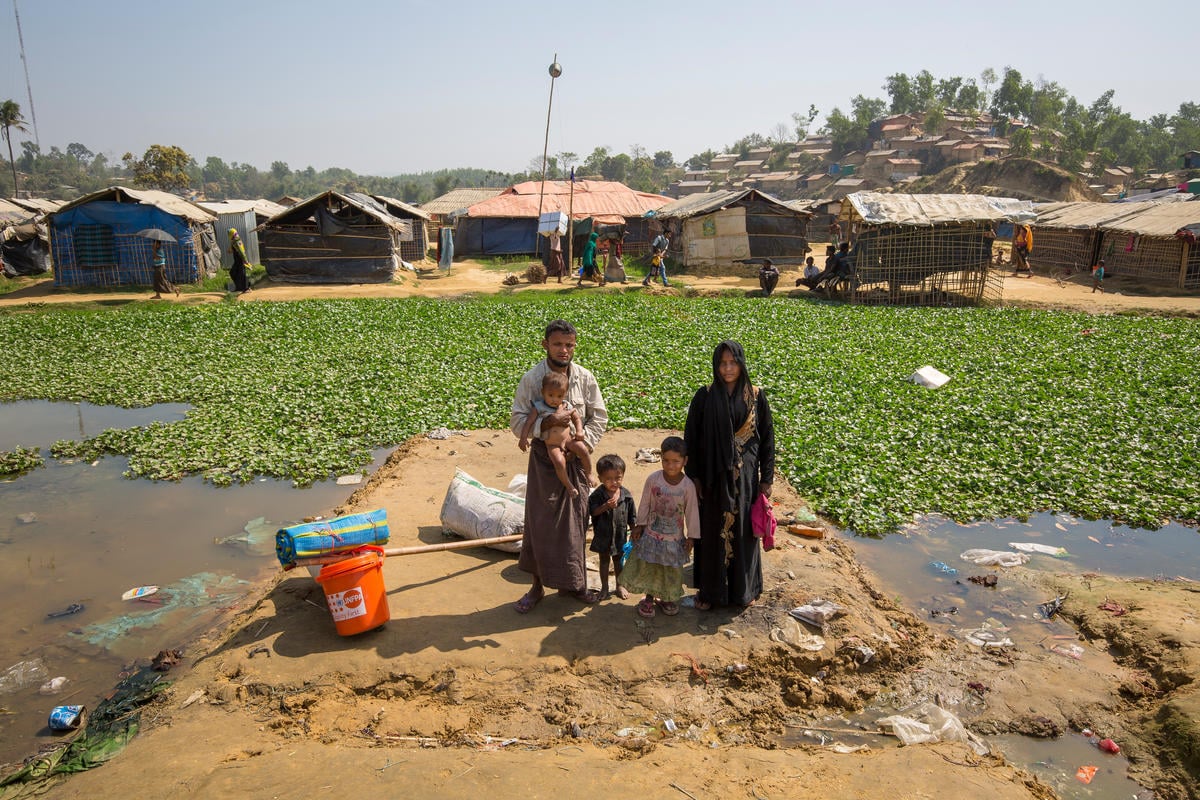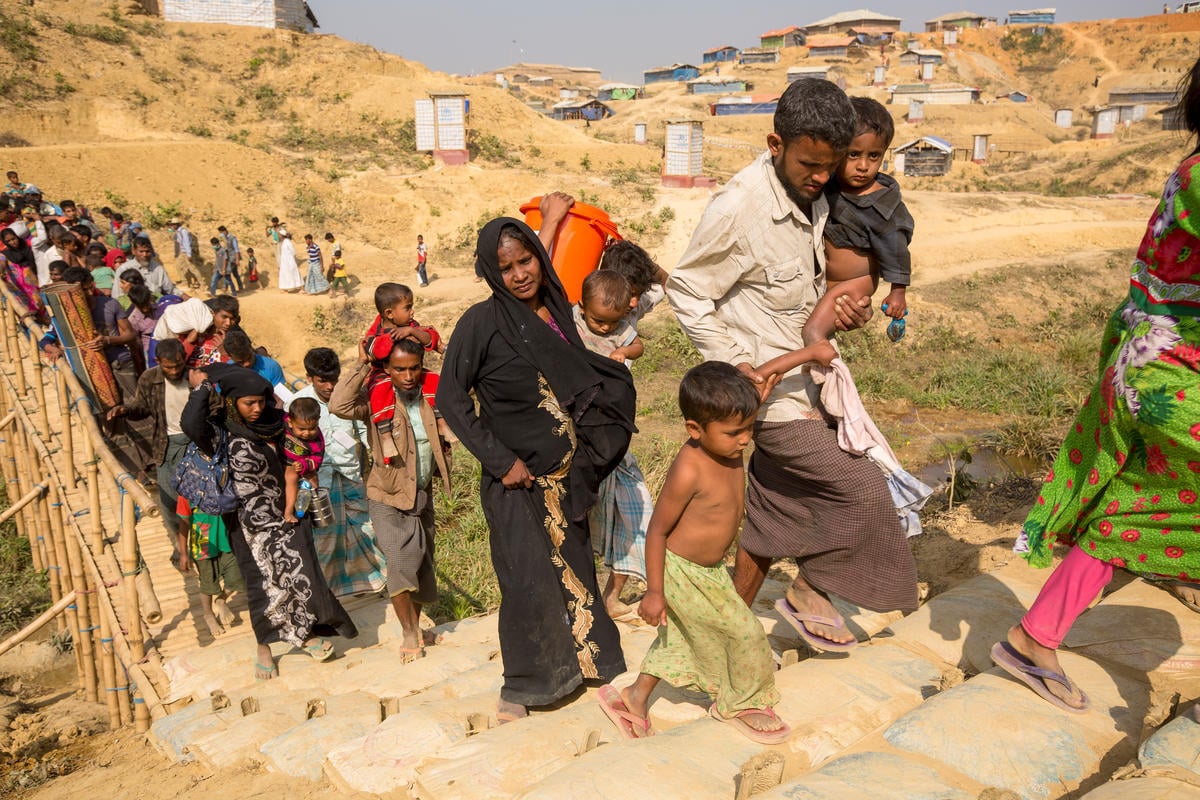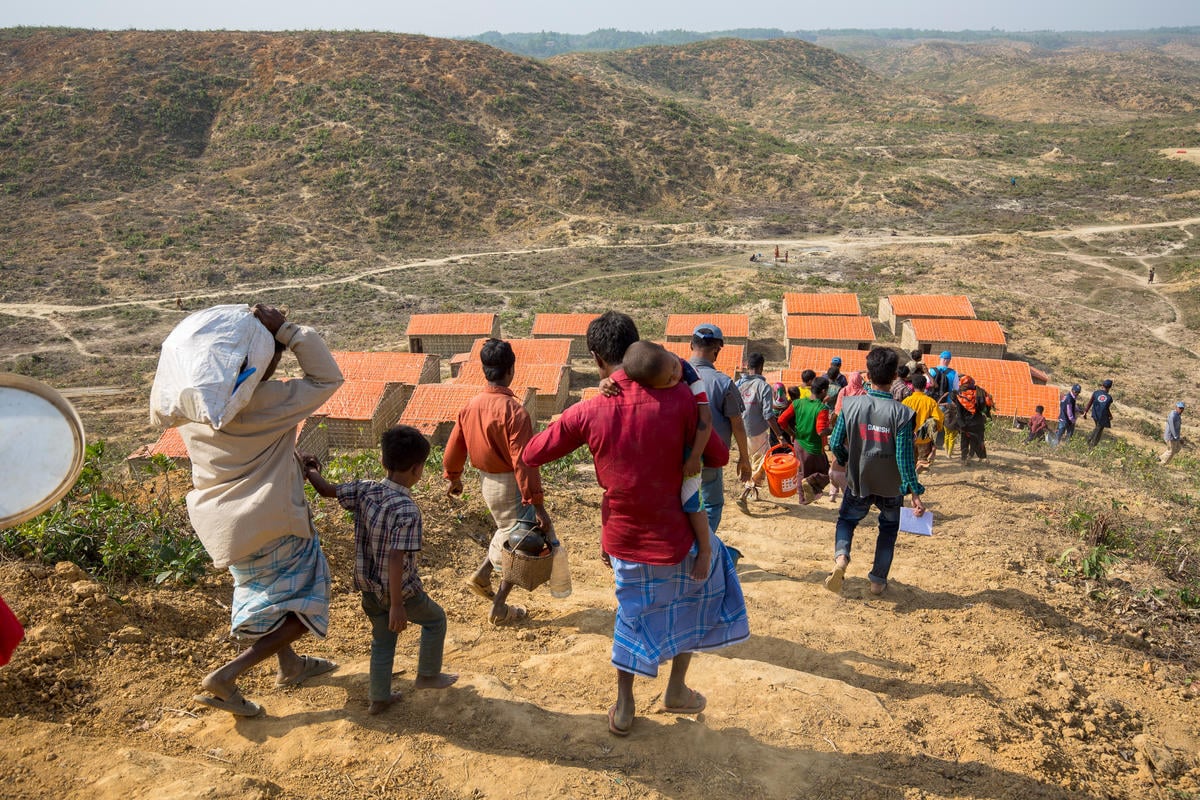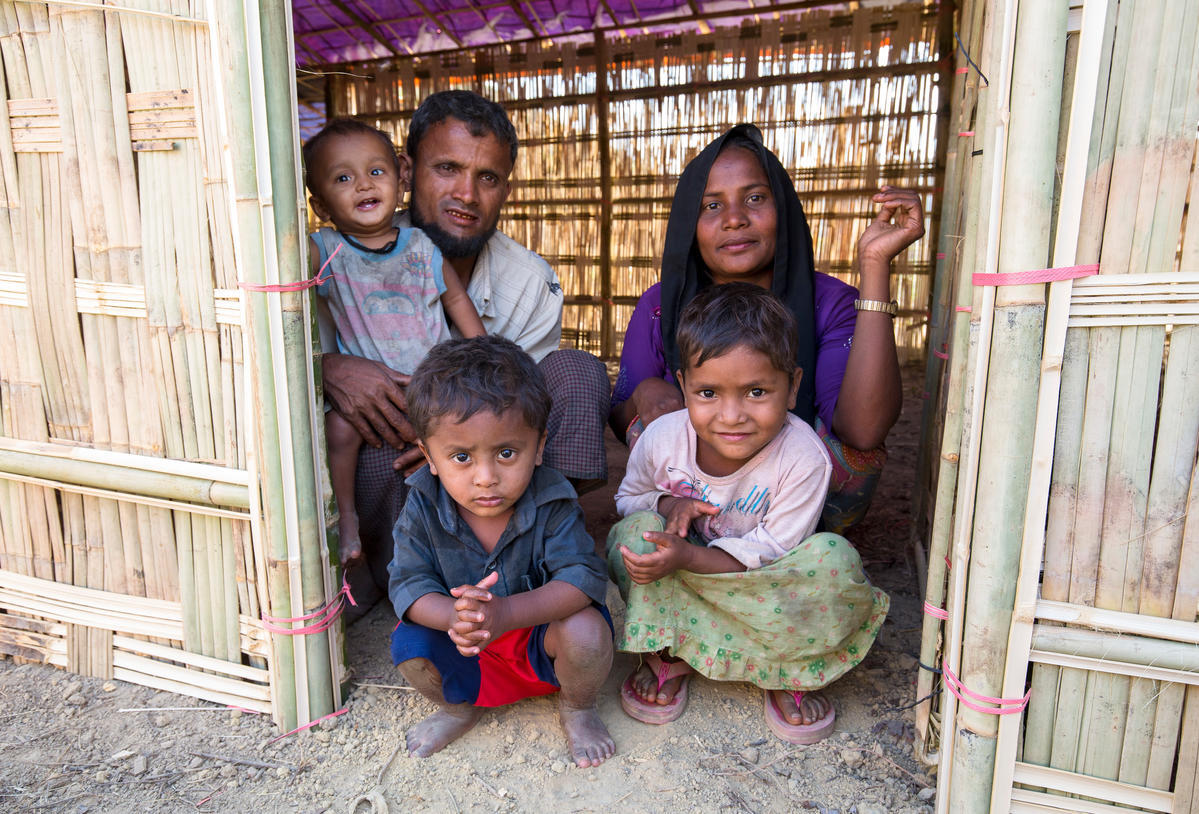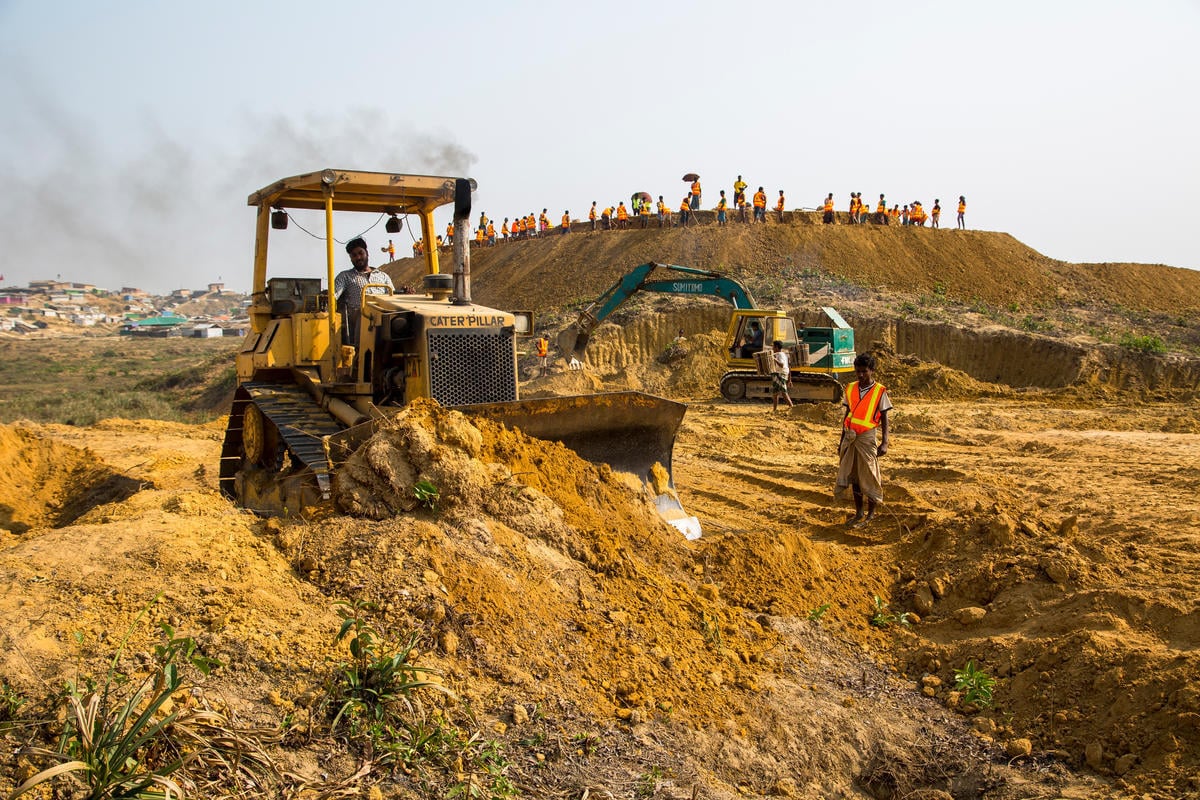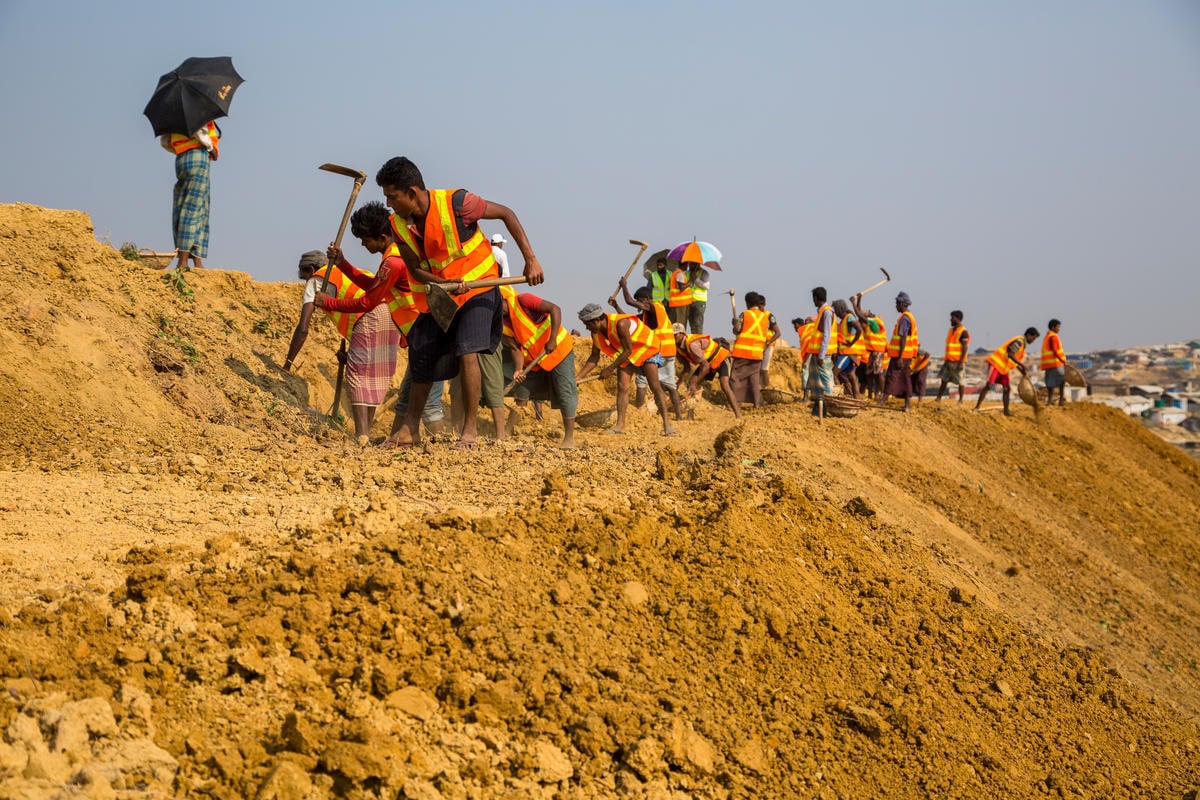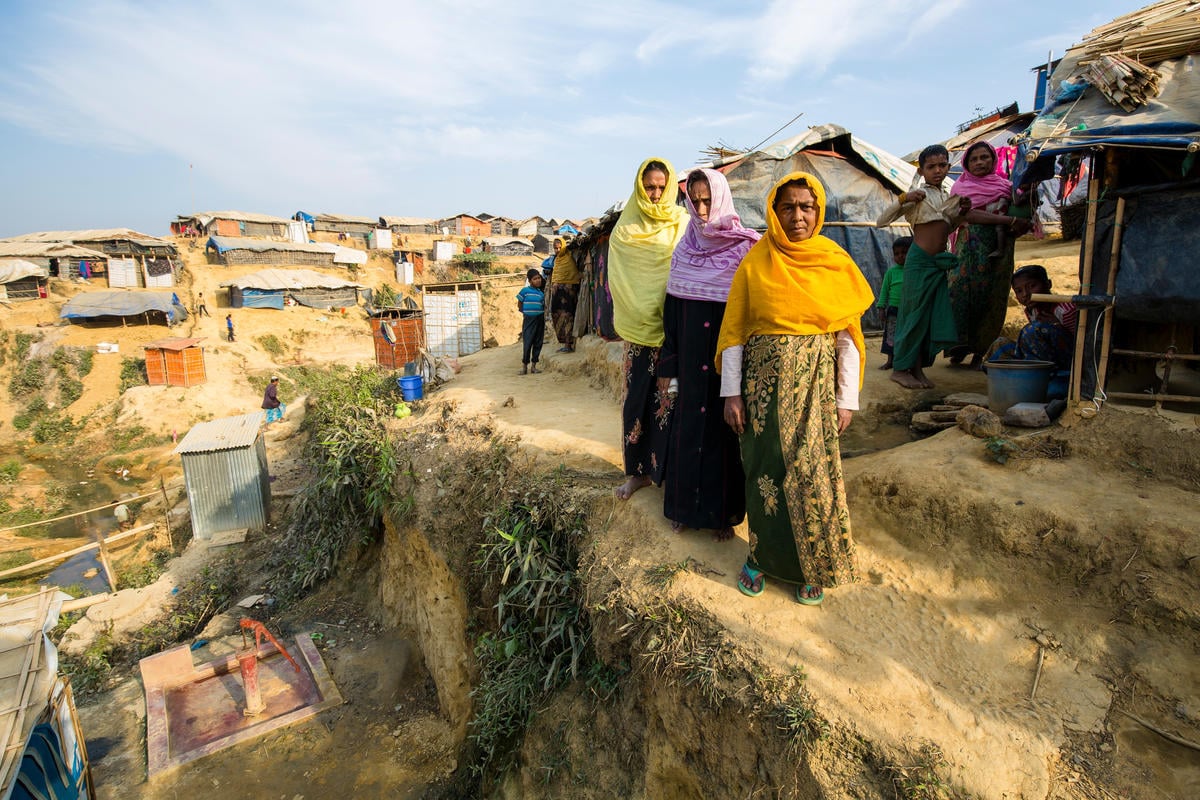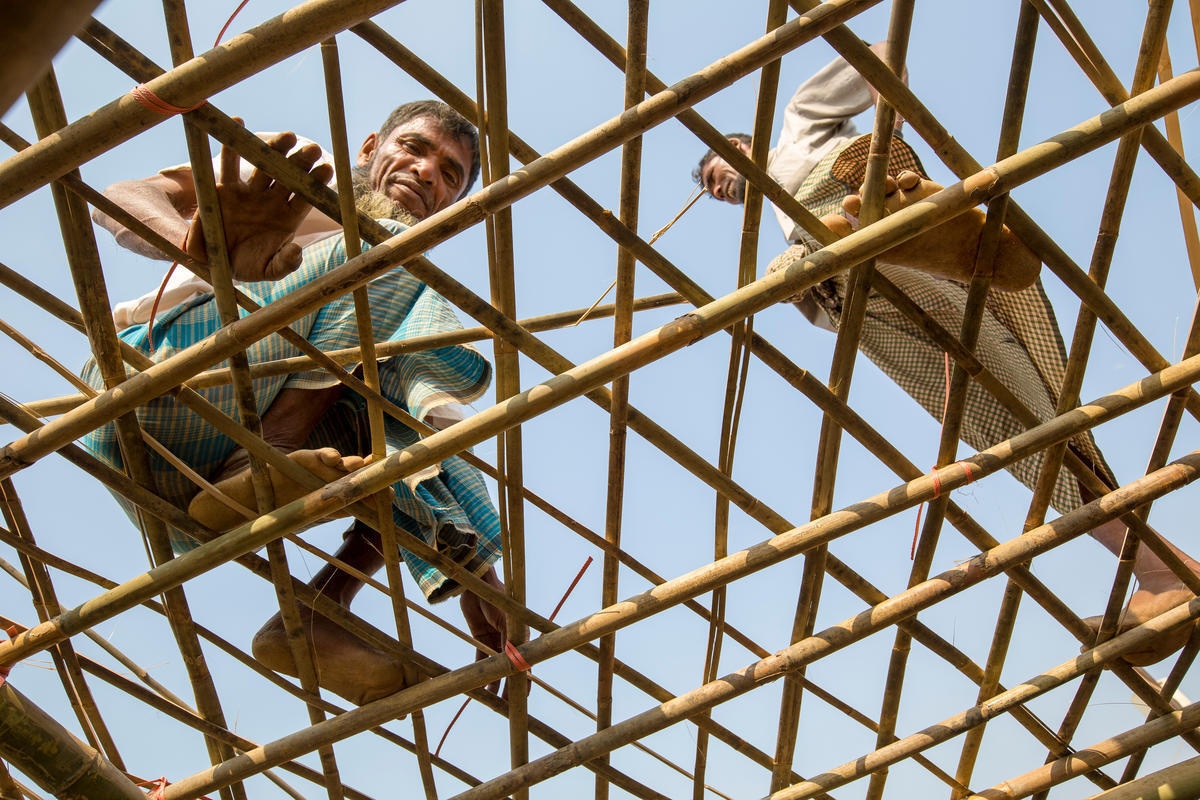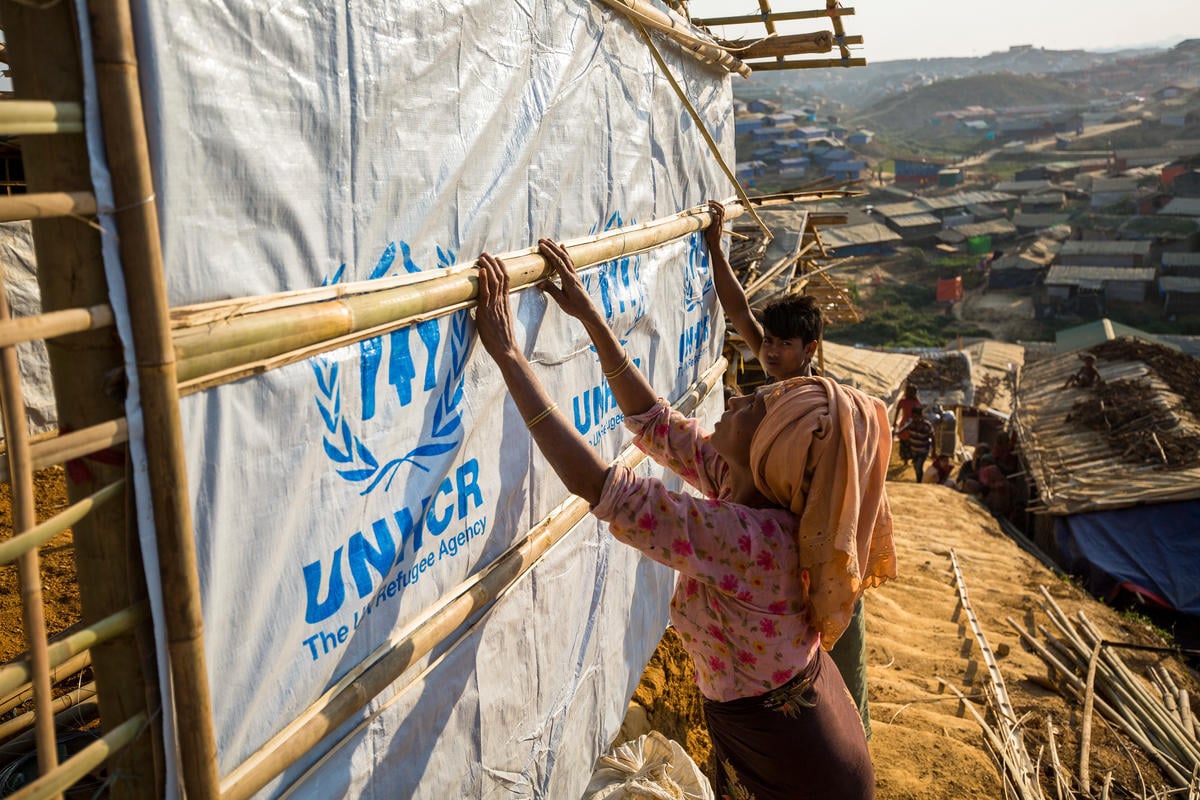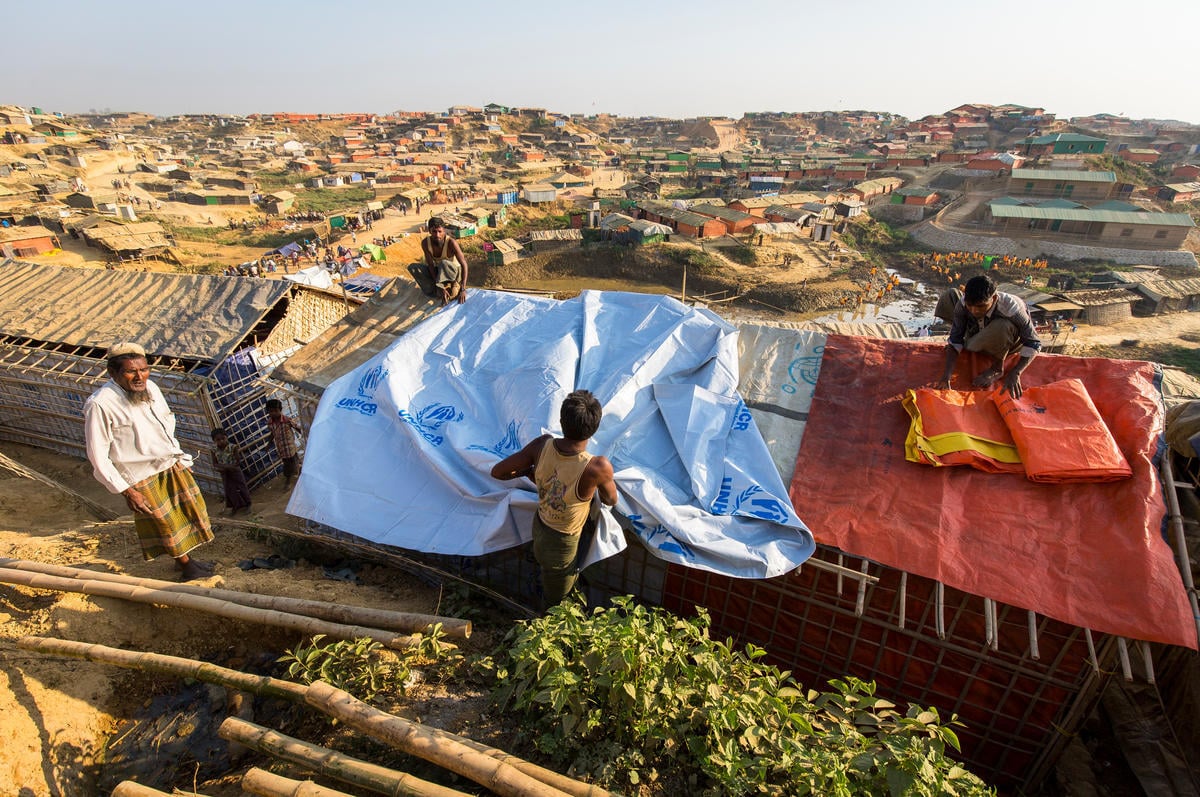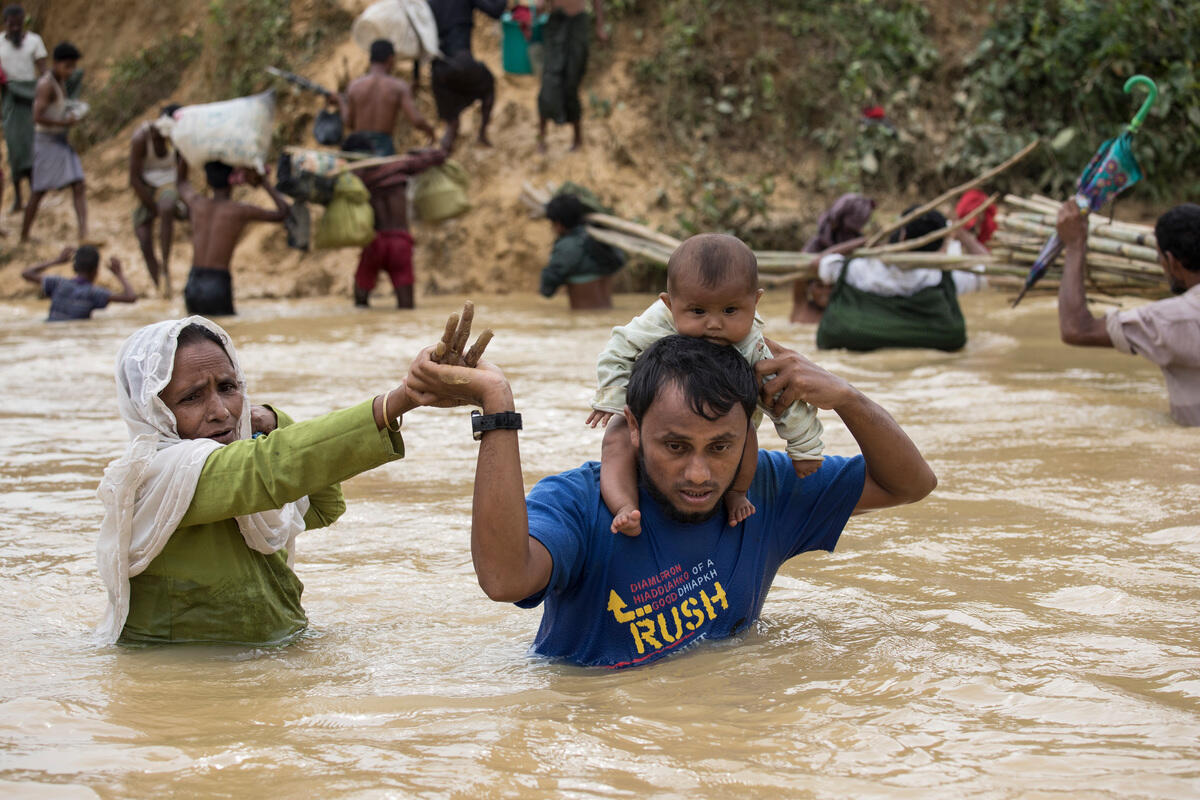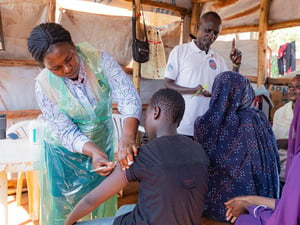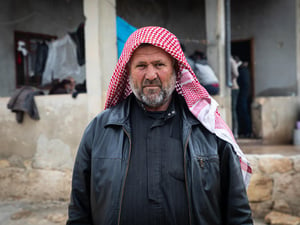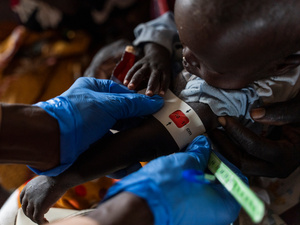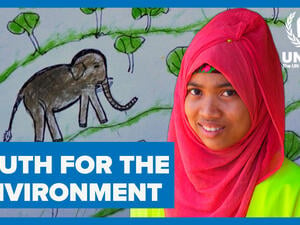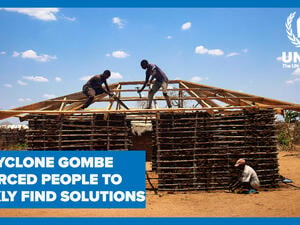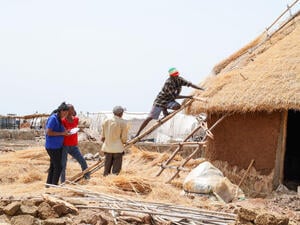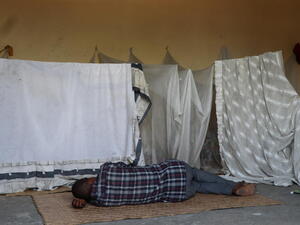Racing to avert a monsoon catastrophe in Bangladesh
Their few belongings packed into rice sacks, Momena Begum and her husband Mohammad Harez squat on a damp plot of sand just above the waterline, waiting to move out.
Almost surrounded by a chest-deep stream, they know the coming wet season in Bangladesh could bring the deadly dangers they narrowly escaped in Myanmar.
“None of us can swim,” says Mohammad, a father of three. “If we are here in the monsoon, we will surely drown.”
With the rainy season a few weeks away, the Bangladeshi government, supported by UNHCR, the UN Refugee Agency and its partners, is in a race against time to avert a catastrophe threatening the world’s largest refugee settlement.
More than 670,000 Rohingya refugees have fled to Bangladesh since August to escape killings, arson and rape in Myanmar’s Rakhine State, many settling spontaneously on the unsuitable hillsides around Kutupalong.
“None of us can swim. If we are here in the monsoon, we will surely drown.”
Monsoon rains reach a peak in July and August, dumping up to two inches of rain a day, and more than 150,000 residents of this mega-settlement are at risk from flooding or landslides.
“It is not if this is going to happen, it’s when,” says John Wain, until recently senior emergency shelter officer with UNHCR in Cox’s Bazar.
“The soils in that site are a combination of clay, silt and sand layers, and those soils will move. There will be landslides, there will be floods, there will be ravine floods, there will be flash floods.”
The risk of landslides has been aggravated by the felling of trees, and grubbing out of their roots, for fuel to cook.
The impending danger is keenly felt by refugee Mohammad Alam and his family, whose shelter stands beside a low-lying creek. It burst its banks one night as farmers released dam water to irrigate rice crops, flooding them out.
“We were up to our ankles in filthy water this morning,” says Alam, 40, a father of three children under four years old. “It’s not safe for us here.”
UNHCR has relocated the first of 360 families deemed at greatest risk, including those of Begum and Alam, to higher ground in the west of the settlement, in a project with its partner, the non-governmental agency, Caritas. More will be relocated by the International Organization for Migration (IOM).
In an appeal launched earlier this month, UN agencies and their partners are seeking US$951 million to meet the urgent needs of Rohingya refugees and Bangladeshi host communities.
The Bangladeshi government, UNHCR and its partners are taking other urgent steps to better protect nearly 80,000 people deemed at greatest risk of flooding in the area, and 23,000 threatened by landslides.
"There will be landslides, there will be floods, there will be ravine floods, there will be flash floods.”
To reduce the danger of slope collapse in a new 123-acre site designated for relocated families, mechanical diggers are reducing the angle of some of the steepest hillsides at greatest risk of giving way. They are backfilling the valleys with soil to provide more stable ground for shelters.
Teams of paid refugee labourers and diggers are excavating and straightening clogged waterways in the camp. The goal is to allow flood water to flow unhindered into the Teknaf River and the sea, in a project with UN sister agencies IOM and the World Food Programme.
“It’s a priority activity,” says Wain. “If we don’t start now, we won’t have dry ground before the monsoon.”
Access roads into the settlements could also become blocked by landslides and inaccessible to vehicles, making it hard to provide emergency aid. To keep them open, the Bangladeshi government has said it will pave them with bricks.
Engineering projects are also under way to build bamboo-reinforced footpaths, raised bridges and sturdy retaining walls to stabilize hillsides, stripped of trees and even their roots in the daily hunt for firewood.
Contractors and refugees are using sandbags staked with bamboo to reinforce steps carved into steep hillsides, which turned into mudslides during the last wet season, as grandmother Siraj Begum discovered at great personal cost.
She lost her footing during a cloudburst and fell down the hillside from her shack into the fetid creek below, injuring her leg, which still troubles her today.
“I don’t know if we can live here through another monsoon,” she says in her home on a crumbling slope designated for levelling. “I’m worried the whole hillside might come down.”
UNHCR and its partners are this year providing 80,000 families in the camp with bamboo poles and tarpaulins to weatherproof flimsy shelters. Among the beneficiaries is father-of-seven Mohammad Ishaq, whose home clings to an exposed ridge.
Helped by neighbours, he has re-roofed it, woven sturdy bamboo walls and sealed the dirt floor with cement. “My only concern now is the wind,” he adds, casting a weather eye over the valley below.
Landslides could also sweep tube wells and latrines into creeks, in which residents wash clothes and children play, raising the threat of outbreaks of water-borne diarrhoea which last year made thousands ill.
Teams are digging boreholes to greater depths to draw cleaner water filtered through the sandy soil. Public health workers are prepositioning medicines to ensure effective treatments are available where they will be needed, although the challenges are daunting.
“We’ve managed outbreaks of diarrhoea before, but not when you are talking about nearly one million people.”
“We’ve managed outbreaks of diarrhoea before, but not when you are talking about nearly one million people,” says Mwiti Mungania, the senior public health officer with UNHCR in Cox’s Bazar, who previously worked with refugees in Chad. “If it happens, it could be a huge issue.”
Among families who have already been flooded out, health problems are already evident. As they wait to move out, Begum’s son Mohammad Anas suffered from a cough and vomiting. “It gets worse at night,” she says.
A neighbour, four-year-old Nurul Absar, has chills which his grandmother blames on contaminated water. “He has a fever now because of the water, and it could only get worse with the monsoon,” she says.
- See also: Rohingya refugee emergency at a glance
UNHCR is working with 230 refugee community outreach members, fanning out through the settlement to identify elderly and infirm refugees who are among the most vulnerable.
Ahead of the gathering storm, plans include identifying safe havens for any separated children and prepositioning food and medicines should those in need be cut off by the weather.
Other plans involve training refugees in first aid and advising people to put identity documents and other vital papers in plastic bags.
“We have been getting ready,” says refugee Azizur Rahman. “Now it’s in God’s hands.”


